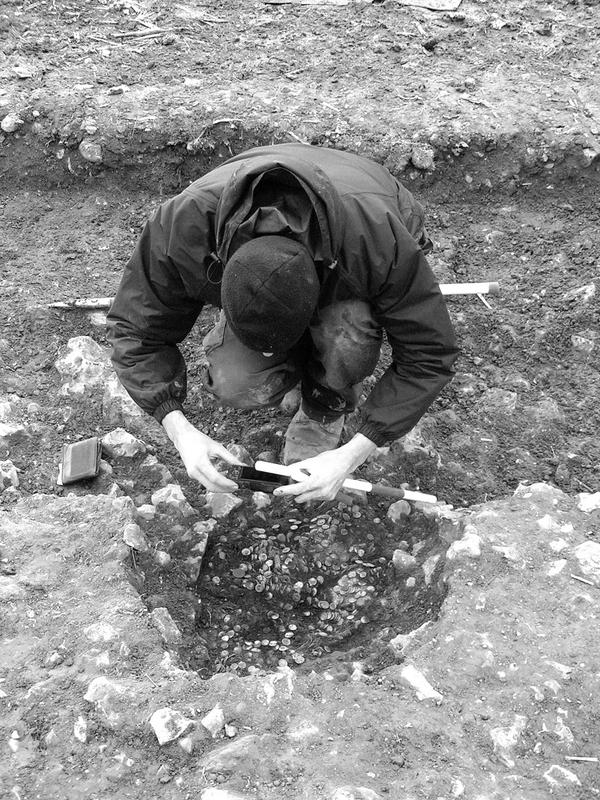First the announcing tweet:
Portable Antiquities @findsorguk
News story: "Portable Antiquities Scheme records one millionth find"#pasmillionth http://finds.org.uk/news/stories/article/id/260 …
On the occasion of the publication of the Portable Antiquities Scheme Annual Report 2013, its one millionth find recorded is announced. The find is a Roman coin in a hoard of 22,000 others dating to around AD341 found in Seaton, Devon. [...] The recording of over one million objects on http://finds.org.uk since the Portable Antiquities Scheme (PAS) was founded in 1997 is testimony to the enormous success of the scheme, which allows finds discovered by members of the public to be recorded for the benefit of researchers and the public alike.There, I was right, a so-called Roman grot. Pour encourager les autres.
The copper alloy coin, called a nummus, was struck in AD 332 at the mint of Lyon (Gaul). It shows the personification of Constantinopolis on the obverse and a Victory on prow on the reverse. This very common type was struck by Constantine the Great across the Empire to celebrate the inauguration of the new city of Constantinople which was to become the capital of the Eastern Empire.The rest of the text is a typical piece of PAS-fluff and spin, but interestingly reveals the great extent to which compulsory reporting under the Treasure Act has been responsible for the "wotta-lotta-stuff-we-got" figures. Voluntary reporting by artefact hunters, once held to be the mainstay of the database, now recedes into the background as emphasis shifts from the broader picture of use of the landscape to individual spectacular finds of gold and silver. From the site to object. This is a very worrying reorientation of the conceptualisation and public representation of archaeology.
It is difficult to see how this will help the Scheme achieve an aim which they declare to be
"raise awareness of the educational value of archaeological finds in their context, and promote the care and protection of the historic (sic) environment on a local level".Artefact hunting in its current form erodes the historical environment and our ability to study and understand it. The PAS is providing very minimal mitigation of its effects on the archaeological record, both at the macro and micro-level. "One million" finds recorded from this is nothing compared to the numbers which may reasonably be thought to be being lost through collection-driven exploitation of the archaeological resource.
But I bet that's not going to be mentioned today in the self-gratulatory speeches and photo calls among the canapés and sparkling white wine in plastic flute glasses in the gallery today.










No comments:
Post a Comment